Yes, I’ve been a bit absent lately. But I have a really good reason and perhaps you might even be happy with the fruits of what I’ve been  working on. If you haven’t heard, I’m a big proponent of using essential oils for a myriad of health care and wellness needs. They are the oldest known forms of medicinal aid we have on record and they are still being used regularly by medical professionals in Europe and parts of Asia. My problem though, while researching them for over a decade, was that I kept trying them and they didn’t work for me. Frankly, I had thought that I was just the exception to the rule and still foolishly purchased thousands of dollars of what I thought were the best quality oils at the time in hopes that they would help someone else, someday, when traditional medical care would not be available.
working on. If you haven’t heard, I’m a big proponent of using essential oils for a myriad of health care and wellness needs. They are the oldest known forms of medicinal aid we have on record and they are still being used regularly by medical professionals in Europe and parts of Asia. My problem though, while researching them for over a decade, was that I kept trying them and they didn’t work for me. Frankly, I had thought that I was just the exception to the rule and still foolishly purchased thousands of dollars of what I thought were the best quality oils at the time in hopes that they would help someone else, someday, when traditional medical care would not be available.
Essential Oils Constituents
Although discouraged with my own health issues, I continued to study essential oils. I felt strangely drawn to it and felt like I still had more to learn in order to be fully functional in their use. As a result I came to realize some critical aspects to the harvesting and manufacturing which would make all the difference in the world as to whether or not my body would respond to them. This was a BIG discovery because if finally gave me hope—hope that I wasn’t a lost cause. Instead I discovered that there is so much adulteration in the industry that less than favorable effects can easily be realized. More importantly, I discovered that based on the constituent science of essential oils, I needed to be very picky when deciding to purchase essential oils. Rather that look at the glitzy advertising or the number of persons who “Like” it on Facebook, I 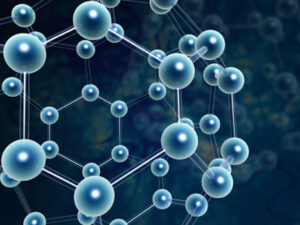 discovered that the key to having essential oils actually work in my life was to make all of my purchasing decisions based on the constituent make up.
discovered that the key to having essential oils actually work in my life was to make all of my purchasing decisions based on the constituent make up.
Constituents are the chemical elements which are found in an essential oil. Most of us already know about constituents. We know that water is made up of hydrogen and oxygen constituents. Well, essential oils are the same, and there are constituents that we want to have in our oils at a level of specific percentage in order to be most effective on our bodies. Likewise, there are those constituents that we do not want in high percentages in or on our bodies; as they can harm, rather than help. All essential oils have hundreds of constituents in them, in fact rose oil has so many constituents, not all of them have even been named, let alone fully explored from a therapeutic benefit perspective.
The inherent constituents of an oil are important to know, but it’s also imperative that we understand what the primary, active, and passive constituents are in each oil, because that will give us the most obvious characteristics of a particular essential oil which will then give us some idea as to whether or not we want to use that oil. Understanding the constituents will also identify which body system the oil will be attracted to work as well as how each oil will interact with each other.
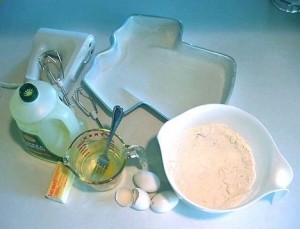 In some instances you’ll have the same constituent in different oils, they may even be primary constituents, but they will behave very differently as a result of the synergistic effect that takes place when they come together. As an example, there’s a lot we can do with flour, water, butter, and sugar, right? What makes the difference between a cake or a pie crust is the amount we use of these items, right; and in some cases it’s just as important to know what kind of flour (wheat, white, pastry, bread) we’re using, right? Well, the same is the case when it comes to understanding the various constituents in the essential oils and how they will affect our health and wellness.
In some instances you’ll have the same constituent in different oils, they may even be primary constituents, but they will behave very differently as a result of the synergistic effect that takes place when they come together. As an example, there’s a lot we can do with flour, water, butter, and sugar, right? What makes the difference between a cake or a pie crust is the amount we use of these items, right; and in some cases it’s just as important to know what kind of flour (wheat, white, pastry, bread) we’re using, right? Well, the same is the case when it comes to understanding the various constituents in the essential oils and how they will affect our health and wellness.
Here’s an example. There are over 500 different species of eucalyptus oil (which is the one oil that I use every single day no matter what). But I deliberately use the oil that comes from the eucalyptus radiata species. This species should contain a primary amount of the constituent 1.8 cineole if it’s not been adulterated by other inferior oils.1.8 cineole is responsible for attacking and killing the harmful bacteria and viruses in the respiratory system. Now, the 1.8 cineole I use has an astounding 83.41% 1.8 cineole, which explains in part, why, when I put a drop across the bridge of my nose, my sinus pressure is almost immediately relieved.
Now the radiata species contains plenty of other constituents, too which act as the activating constituent and the passive constituent. But one of the constituents that I’m always mindful of in eucalyptus oil is the amount of camphor because if it’s present in excess of .05%, it could prove harmful to the respiratory system, even so much as it could stop the breathing of a small child within minutes unless properly combined with other constituents. The radiata species I use only has .023% camphor. That’s fine; just enough to help escort the other constituents to where they need to go and actually assist the 1.8 cineol to do its job. We all know that a little bit of some things are actually good, such as the salt in a 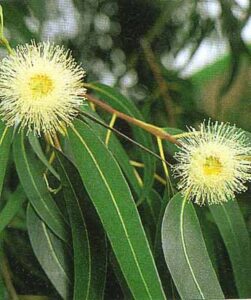 great bread dough recipe. The salt is necessary, but if it comes into contact with the yeast prior to being mixed into the flour, it will kill the yeast. The camphor constituent is very similar. Now, the species of eucalyptus globulus has a smaller percentage of the 1.8 cineole at only 62%; but worse, it contains 24% camphor! Now that could be problematic. Even more alarming is when you discover that due to the lack of integrity in the world of essential oil manufacturing, a manufacturer can legally label a bottle of Eucalyptus Essential Oil as “100% pure”; they can even go so far as to label it as “eucalyptus radiata” so long as 2% of the contents of the bottle comes from that species. But guess what? The rest of the bottle can be filled with the globulus species with no requirement to tell you otherwise. Why do they do this? Because the globulus species is much less expensive than the radiata. Diluting the oil in this manner makes it more profitable to the manufacturers but significantly less reliable to you. It’s this kind of adulteration practices that cause some to believe that they are “allergic” to a particular essential oil, when in fact, they are more than likely allergic to the presence of a harmful constituent or other adulterant that’s been added.
great bread dough recipe. The salt is necessary, but if it comes into contact with the yeast prior to being mixed into the flour, it will kill the yeast. The camphor constituent is very similar. Now, the species of eucalyptus globulus has a smaller percentage of the 1.8 cineole at only 62%; but worse, it contains 24% camphor! Now that could be problematic. Even more alarming is when you discover that due to the lack of integrity in the world of essential oil manufacturing, a manufacturer can legally label a bottle of Eucalyptus Essential Oil as “100% pure”; they can even go so far as to label it as “eucalyptus radiata” so long as 2% of the contents of the bottle comes from that species. But guess what? The rest of the bottle can be filled with the globulus species with no requirement to tell you otherwise. Why do they do this? Because the globulus species is much less expensive than the radiata. Diluting the oil in this manner makes it more profitable to the manufacturers but significantly less reliable to you. It’s this kind of adulteration practices that cause some to believe that they are “allergic” to a particular essential oil, when in fact, they are more than likely allergic to the presence of a harmful constituent or other adulterant that’s been added.
The Impact of Essential Oils
Once you understand the role which constituents play in the effectiveness of essential oils, it’s likely easier for you to accept their impact on the body just as a matter of fact as any other scientific constituent. I’ve had some people label essential oils use as “snake oil” or “woo-woo” practices. Unfortunately, the poor practices of the essential oil industry gives plenty of credence to such skepticism. But if you look at the make-up of an essential oil on a scientific basis, then you can make informed logical decisions. We don’t question whether or not the constituents of hydrogen and oxygen allow the digestive system to work more efficiently, or to satiate thirst or dehydration in the body. The identified constituents in essential oils are just as known through centuries of research and use—something that none of the pharmaceutical companies can claim today. Admittedly though, the problem is that too many essential oil manufacturers only possess and provide the most “end result” kind of information on their product such as “lemon essential oil is a deodorizer” without any measure of knowledge on the actual constituent makeup. I’ve heard far too many essential oil manufacturers try to tell me that all oils are the same and they all come from the same place in the world, etc. To make such a ridiculous statement as that is to show one’s ignorance of the hundreds of species of botanicals there are in the world; AND also be naïve of the fact that the harvesting practices make a huge difference in the level of those constituents too. For example, lavender plants will posses a greater percentage of the highly beneficial constituent linalyl acetate if it’s harvested at 5,000 foot altitude. Growing and harvesting it in the deserts of Utah will dramatically change the constituent profile. As another example, German Chamomile should posses a 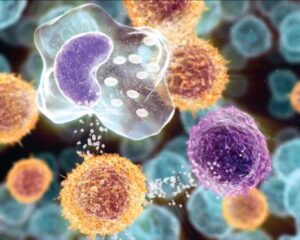 dominant percentage of alpha-bisabolol-oxide which works so amazingly on managing inflammation of the skin and the muscles. However, if it’s not hand-harvested between the hours of 2 a.m. and 4 a.m., then this fabulous constituent is rendered useless as the light and heat of the son greatly diminish its ability to communicate at the cellular level.
dominant percentage of alpha-bisabolol-oxide which works so amazingly on managing inflammation of the skin and the muscles. However, if it’s not hand-harvested between the hours of 2 a.m. and 4 a.m., then this fabulous constituent is rendered useless as the light and heat of the son greatly diminish its ability to communicate at the cellular level.
If you really want to be knowledgeable about the use and application of essential oils in your life as well as the quality of them, then you’d do well to become more familiar with the constituent make up. Instead, today we usually are only given the empty “sizzle” of a particular essential oil such as Birch oil, for an example. It’s the constituent of methyl salicylate that targets the bone and teeth in our body and acts as an anti-inflammatory there in. An effective Birch Oil should have a predominant amount of this constituent in order to enjoy the positive reputation of Birch oil. However, due to the fact that there are only two essential oil manufacturers in the world that have a corner market on the resources for Birch oil (one in the U.S. and one in Europe), most times when you purchase a birch essential oil its diluted with it’s fragrant look-alike, Wintergreen. Wintergreen typically contains just under 100% of methyl salicylate. At this level, and without any of the activating and passive constituents to work with it effectively, you’ll find yourself facing liver failure before you enjoy a complete regeneration of your skeletal system. Again, as a comparison, we know wheat is good for our bodies, but if taken exclusively and without sufficient water in the body system as well, a person will die of dehydration within 30 days.
The fact of the matter is, the typical traits that are shared about essential oils are subject to alarming inaccuracies unless the descriptions are based upon the specific constituent make-up of that oil. To broadly state that lemon essential oil is a deodorizer is to be naïve without having a grasp of whether or not the oil contains a primary amount of limonene, then beta-pinene as the activating constituent, and then gamma-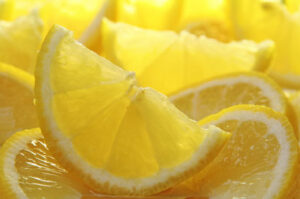 terpinene as the activating agent. If any of these three agents are off in their dominance levels, then you only have an oil that smells like lemon, not an oil that deodorizes the air or gently cleans out the liver.
terpinene as the activating agent. If any of these three agents are off in their dominance levels, then you only have an oil that smells like lemon, not an oil that deodorizes the air or gently cleans out the liver.
After having studied the composition and the impact of essential oils for over 10 years now, I have to say that I am truly what some may call an “essential oil snob.” I can no longer just look at a label and assume that just because it says it’s “rose oil”, that it is 100% rose oil without the adulteration of the very cheap-o oil. If I’m going to bet my life on the efficacy of these tools, then to me it makes sense to be very familiar with them. I’m only willing to spend money on botanical products that I know will be beneficial to my body.
So what does all of this have to do with what’s been keeping me so busy lately? Well, I finally “wrote the book”—literally—on the constituent make-up of each of the essential oils that I use—the only essential oils that I use—because after 10 years I only found one company that actually treats their essential oil manufacturing with the appropriate reverence that I feel is necessary in this world. I mean, after all, aren’t people basing their lives on whether or not those labels and pamphlets are correct? I have to say that this was indeed the most difficult writing assignment I’ve ever done. There were so many times that I thought I was writing in ancient Hebrew; and I struggled to better understand the scientific terms, parts of the body, etc. But I can honestly say that I’m 100% proud of the end result because now people can decide for themselves based on actual knowledge (not company gossip) which oil may best serve their purpose. Better yet, because of the identification and explanation of the constituents they will now know WHY a particular oil is ideal for their targeted needs. So yes, while I’ve been a bit absent, I’m confident it was for a very, very good reason.
There is some bad news to all of this though. As a result of my research, I have had cause to be a bit alarmed with the products that I see widely used in the market today. One popular company I spoke to as part of my research stated that they did not do ANY constituent reports on their products. Holy cow! Then how in the world do you know that you’re not just selling snake oil that will eventually destroy the kidneys or the 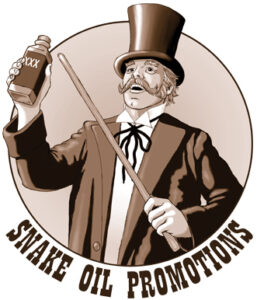 nervous system, etc? I evaluated the contents of another product which is one of the best sellers of a large manufacturer, only to discover that the product contained wintergreen AND white camphor. Seriously, I just about cried. I have a lot of friends who are head over heels in love with their present essential oil choices, but who are uneducated on such important matters as the constituent make-up of their oils. It’s important to note, though, that I don’t believe that these companies are trying to do anything malicious. I prefer to think that they are just ignorant of what they are doing to people's bodies as a result of their ignorance of the impact of essential oil constituents.
nervous system, etc? I evaluated the contents of another product which is one of the best sellers of a large manufacturer, only to discover that the product contained wintergreen AND white camphor. Seriously, I just about cried. I have a lot of friends who are head over heels in love with their present essential oil choices, but who are uneducated on such important matters as the constituent make-up of their oils. It’s important to note, though, that I don’t believe that these companies are trying to do anything malicious. I prefer to think that they are just ignorant of what they are doing to people's bodies as a result of their ignorance of the impact of essential oil constituents.
Another popular company I researched claimed that they used “the slightest amount of pressure” in their essential oil extraction process. What they don’t understand is that you can’t have any pressure without having accompanying heat at high temperatures (just look at the gauge on any pressure canner). So if you are using even “the slightest amount of pressure” then you are compromising the integrity of the constituent make-up, even rendering them useless, only to have people pay $100 for 5 ml.! I have to say, though science classes weren’t my favorite in school, I am grateful for the sense of certainty we can have, even in the world of essential oils, if we will just apply a few sound theories when determining which is best for our needs. I’m especially grateful to know that being sick and poor, and having no hope for recovery does not have to be a persons way of life. They can spend a fraction of the money they would have on a doctor's visit and receive results that are even impossible in today’s pharmaceutical industry. To me this book represents a sense of clarity that’s been absent in the world of essential oils. But more importantly, it represents a hope to address as many of our health and wellness scenarios as possible without feeling like our hands are tied due to the skyrocketing medical costs or ineffective, addictive and harmful pharmaceuticals.
If you’d like to get the book, you can get it at www.beyoungeo.com/8285 It is item number 3135 and it’s only $28 in spite of the hundreds of hours that went in to putting it together. Also, if you’re game to really getting a broad grasp on the constituents as they stand alone, you may want to check out the book called Advanced Aromatherapy by Kurt Schnaubelt. It’s only $11.77 on Amazon. It doesn’t get into the nitty gritty of the specific oils like the M.A.P. Constituent Guidebook does, but I found it to be a great and helpful resource. If you haven't already enrolled for 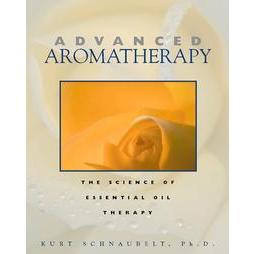 free on Be Young's website, you'll need to use the number "8285" in order to be able to place an order.
free on Be Young's website, you'll need to use the number "8285" in order to be able to place an order.
CORRECTION: Apparently, due to the high demand of this book, they are presently only permitting Be Young Sharing Partners to purchase it through their back office. This means that in order to get it, you'd need to "enroll as a sharing partner" first. Fortunately, it doesn't cost anything to do so and you can then order everything wholesale instead of retail. It is my understanding that after they get their 3rd edition printed this week they will make them available to the public. To order after enrolling just "Log In" as the distributor. That will take you to the back office. Then click on the "order" icon and then click on the left on "new order." You'll be able to either put in the item number of 3135 or "guidebook" and you'll find it. Grrrr... Oh, and by the way, unless you're planning on earning a living with this, I would not worry about putting in a real social security number. It's not legally required unless the company would be paying you commissions.
A quality essential oil will have an unlimited shelf-life and will give you all the impact you need with just one single drop on a regular basis. Indeed, one drop of pure and potent essential oil contains enough microbes to affects every single cell in your body within 20 minutes. If your oil contains the right constituents, then you should never feel like you have to apply more and more to get the result you need. Also, while it should go without saying, I’d strongly recommend staying away from any essential oil manufacturer who does not test every batch of their essential oils on a third party basis. An essential oil should garner a soil test in order to ensure there are no pollutants in the soil which then manifest themselves in the oil. An essential oil should never be stored in a carrier oil such as almond, grape seed, or coconut. While these three oils are good for you, they can easily compromise the integrity of the oil if the essential oil is stored therein. One last thing, keep in mind that the body functions as a whole. If there’s a problem with acne on the face, that’s actually a good indicator that the liver is out of whack. Essential oils don’t need to be told where to go for you. They communicate on a cellular level and are thus directed to the appropriate cells which are lacking in cellular nutrients.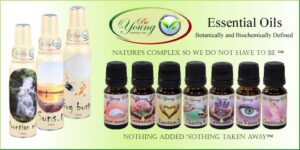
Just by way of reminder, we’ve got Vox Day, author of “The Return of the Great Depression” and guest columnist for World Net Daily (www.wnd.com) with us on tomorrow’s radio show. This guy is blunt as a spoon, with plenty of expertise to back it. The title of his book will give you the right idea as to what he'll be discussing. I suspect you’ll enjoy it! And if you miss it, no problem; it will be archived. Just click here to listen to it.
Category:
© 2019 Of COURSE this post is Copyright Protected by Preparedness Pro. All Rights Reserved. NO portion of this article may be reposted, printed, copied, disbursed, etc. without first receiving written permission by the author. This content may be printed for personal use only. (Then again, laws are only as good as the people who keep them.) Preparedness Pro will pursue all violations of these rights just as vigorously as she does any of her other freedoms, liberties, and protections.
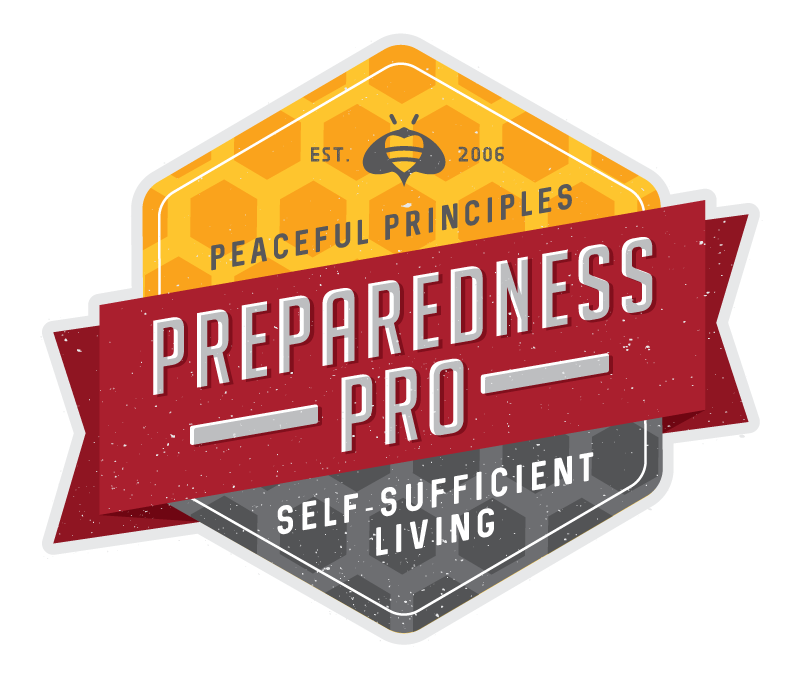

Comments
May I ask which brand of oils you recommend after all your research?
Be Young Essential Oils. www.beyoungeo.com/8285 (Their website is set up presently so that you'll need the "8285" to play around and explore a little. It's being modified dramatically within the next 120 days.)
I have not ventured into the world of essential oil much-only a little in massage therapy school. Thank you for this article to bring some more light on the subject. My question is weather or not there is an essential oil that would be benefitial to diabetics, specifically type 1 diabetics. My husband and my daughter are both T1, and despite doing all we can to stock up on their supplies, I am worried about their welfare when SHTF.
Actually, there are 5 different issues that I have come to "specialize" in. I'm not sure why these five, but it's just turned out that way based on my own family's needs and the needs of close friends. Diabetes is one of them. The answer is YES, there is a great deal you can do naturally. If you'd like to send me a private e-mail, we can discuss this. OK? (Just go to the "contact us" section of the blog site to send me an e-mail directly.
Thank you so much Kellene for writing this book.Iv'e been waiting for something like this. Ill be ordering it pronto.
Kellene' I went on the website and nothing is coming up for your book..Help!
Terrie, if you log in just put "guidebook" in the search bar. It will come up. I loathe the functionality of their website, but knowing I"m using quality product does take away the bite a bit. :-)
Terrie, see my comment below to Pamala. It should help, though it may very well cause you to roll your eyes much as I did. :-)
Hi Kellene,
I just went to the site and put in "guidebook" but it says no item found.
Pam, I just added a modification to the article. It shouldn't be this hard to purchase the dang thing, but it is. I just sent an e-mail off to my buddy who's in charge of the marketing for them. Apparently they have been selling out so fast that they are only giving access to them for Sharing Partners. The good news though is that becoming a Sharing Partner does not cost anything. Go back to the article and follow the instructions so that you can order it. Sorry for the hassle!
did you find major things wrong in DoTerra--they are comparable right?!
They are no where near comparable unfortunately. In fact I was actually referring to them in a couple of the instances I provided in the article.
Hi Kellene...Is there a difference between Be Young oils and Young Living? In my research there were some things I wasn't happy about with Young Living. Thanks for all your work!
Karen, yes, there's a huge difference, unfortunately. Young Living started out with an amazing passion about quality and potency, but over the years they've made changes. For example, their lavender is grown in the middle of the desert in Utah. So you're not going to have the dominance of the primary constituent you need. Additionally, I've asked for certifications on their lavender three times, three years in a row, and they sent me the exact same report. Now it's one thing for them to not want to give me a copy of their report because that's kind of proprietary, kind of like Coca-Cola's recipe, but they could allow me to view it. But it's completely impossible, unless you're God himself, to have the exact same percentages of constituents three years in a row. Mother nature has her unique signature on botanicals year after year. No matter what you do--even growing plants in an indoors controlled environment will not prevent them from having a varying signature.
Thank you so very much for your hard work in writing this book. I cannot wait make my purchase! I was concerned when I received my EO order that it was not Be Young brand, but we will work with that and I am already learning more and more.....
I use my non-Be Young brands for household cleaning and such. (I have lots and lots of them). I'm just very careful in how I use them, that's all.
Hi, I live in Canada and cannot attend your workshop. Do you have c.d or others
to see. I am willing to buy them. I would greatly appreciate on knowing how to make a solar oven. Great thanks Odette
Odette, I'm actually working on a DVD tutorial for essential oil use, but it's a MAJOR product and simply won't be done until January. But these two books that I recommend will be very helpful. As to other classes, I'm not doing any live for the most part. So as I create new classes, they will be offered in print and with video tutorials as well. Check in our "education" section for those that we have now.
I am new to your site - I found it through The Survival Mom blog - I am totally new to the world of essential oils - if I were to start with just five, what would you consider them five most important basic essential oils to have on hand. Thanks for all the great info!
I think the answer to that would be based on whatever health issues that you deal with. Get what you need and can use immediately.
As for me, there are actually six that I simply could not live without. They are: Eucalyptus, Peppermint, Birch, Helichrysum, Lemon, and Frankincense. I also use the lemon and peppermint every morning for maintaining a clean liver. The Eucalyptus is applied across the bridge of my nose each day to help with any sinus pressure that may come on because of allergies and also keeps colds and flu at bay. I use the Peppermint repeatedly throughout the day. At the first sign of fatigue, I rub a little bit on my temples and I stop yawning within a couple of minutes. When I have a "hot flash" I put the peppermint on the back of my neck and cool off. (One of it's primary constituents is capable of cooling the body down without compromising the internal body temp.) The peppermint also greatly reduces the amount of carbohydrates I consume. One of the key constituents has been found to reduce the consumption of carbohydrates by up to 250 grams per week. The Helichrysum constituents really help with nerve pain. I had bilateral carpal tunnel syndrome after a car accident. I couldn't sit at the computer all day like I do without being able to put a bit of that on my forearms or on my feet when I've been on them too much. I'd say that out of all of the people I've worked with, Helichrysum has made the biggest difference in people's lives more often than any other. Birch is a very close second though. It's amazing for bone pain because of the first two constituents it contains. Using it with the peppermint is great for headaches. Using it with the helichrysum is great for bruising. The constituents in Frankinsense are amazing individually, but when combined together they have a synergistic effect on a whole other body system. Amazing!
To be honest, narrowing it down to 5 or even 6 is really hard for me. My daily regimen includes the oils above as well as the following: "Venus", Geranium, and Myrrh for hormone, emotion, and thyroid balancing; Juniper Berry and Bay Laurel for flushing the system of toxins and excess water; Fennel for firming of the face and puffiness; Palmarosa for minimizing pores and eradicating bacteria on my face; Coriander and "Mars" on my husband to balance testosterone and thus moderate rage and anger; "Spice for Life" to strengthen the immune system daily; Copiaba for reduction of swelling in my brain stem and other inflammation in my body; Ravensara to ensure that the fluids and toxins stay out of my lungs; and Clary Sage to help with the health of my reproductive system. Oh, and last but not least I have to have my "Quietsense" because it helps my hubby and I sleep better and I use it on the dogs too for better rest and I use it during the day on the poodle who has a bit of anxiety, and I insist on hubby to use it because it reduces his snoring and makes his mood noticeably better even among stressful situations.
Yup, I'm a junkie. And the more I learn about them the more I use them. :-)
Do you use a carrier oil when applying these essential oils to your skin? On what part of the body are the oils applied or is that info listed on the bottle? For instance, oils used for moods...where would you apply it?
Thanks Kellene.
right at the bottom of the big toe, right at the notch where it bends, or around the fleshy part of the ankle, or over the heart.
Also, I only use a carrier oil on essential oils which have a constituent that kills bacteria and virus by "eating" through it. The Be Young's Oregano and Thyme are two that I would always use a carrier oil for. But I can't conceive of any oils used for moods that would require a carrier oil. The M.A.P Constituent Guidebook actually has application instructions for each oil as well as which body system they work best with.
Did you look into Forever Green TruEssence? I knew those things about doTerra and Young Living, but not many people have heard of TruEssence.
If I only had the choice of Young Living, DoTerra and Forever Green to use for my essential oil needs, I would instead grow my own botanicals and do the best I could to extract the oils myself for my use.
I simply could not be paid to use Forever Green. They were easy to dismiss as viable when I was able to review their testing and quality control practices along with their present financial standing. They are in debt out the wazoo; their quarterly report is miserable. If I was using their products right now, I'd be very concerned that they were cutting quality corners in order to keep their head above water and that they might be inclined to do some unethical business practices. Unfortunately their recent communication with me only confirms their willingness to be shady. *sigh*
OOps, here's the link on the quarterly report (Aug. 2011)
http://biz.yahoo.com/e/110812/fvrg.ob10-q.html
wow, Kellene. I just went to a do-Terra gathering and "signed up". Mistake, huh?
I would consider it a mistake if I were to do it. But I just can't make that supposition for others. I think it's ridiculous to charge people for the privilege of making a company money. Be Young does not charge a thing to enroll to get the wholesale price and to share it with others.
I've heard really great things about Be Young before. It's good to hear a second opinion in favor. I know who I'll be purchasing essential oils from. Thanks for this article.
Kellene,
Another fabulous job of research on your part. Thank you for the tremendous time that you spend educating about these important topics. I am increasing my knowledge of essential oils continually and am looking forward to receiving my copy of the MAP guidebook to help me make wise decisions about using my essential oils! I recently added Copiaba to my selection and love it - thanks again for the recommendation.
Kellene,
I value your opinion very much from what I have read over the last year or so. So I must ask about the EO's you recommend. I researched YL and the one big problem I have is that they are a MLM. Is this the only place you recommend buying? I'm just having a hard time getting over the MLM part. I know there are many successful ones, but there are many unsuccessful or dishonest ones out there too. My parents tried a bunch of them growing up, so that burned me on getting involved with them. I also see that Shelf Reliance/Thrive is one too now and I'm having the same debate in my head about them as well. Thanks!
I see that you realized that you had the incorrect company name, but I'd still like to answer your question regarding MLM companies. Personally, I have an aversion to MLM set ups. I used to think that a MLM structure inherently causes the prices to be higher than need be but now that I'm much more educated in terms of marketing I realize that marketing costs are going to be built into any price one way or the other-- whether it's to pay for Super Bowl commercials or MLM commissions. So that concern is a wash. However, I think that a lot of MLM companies have a problem focusing on what they do best and I loathe it when a parade of big checks cross the stage at a convention. When I was invited to really research Be Young, it was just 3 days after I had spent several days at a DoTerra convention. I told my friend that I refused to have anything to do with a MLM again. I was convinced I should go to a "meeting" which I conjured up in my mind to be like all of the others, but I was assured that the meeting would strictly be educational about essential oils. So I went, because I am a junkie for information. As promised, I never would have known that it was an MLM company from that meeting. Never once did they bring that up. In fact, they are so focused on the product and it's proper use and quality that after over a year of loving their products I still could not tell you even one iota about their commission structure. Unlike other MLM's they do not charge an "application fee" because they believe that an app fee does not heal anyone. Anyway, the primary reason why I recommend Be Young Essential Oils is because of the quality of the oils. But these other serendipitous reasons help to reinforce that decision.
There is a distinct virtue to MLM being used in situations such as this. Dealing with one's health is a very personal issue that's not going to be corrected without the influence of people around us that we know and trust. My endometriosis, for example, is not going to be aided because of a 1:00 a.m. infomercial. Rather, I'm making progress on it because I have friends--real people that I know and trust-- helping me to make tweaks to my protocol and are able to share with me real like experiences that I can invest in rather than a nameless face with deep pockets. This is the reason why the founder of Be Young elected to use the MLM model. Our health is a more personal matter and as such is better served by people we know and trust.
(By the way, I couldn't believe the skyrocketing price on Thrive's freeze-dried yogurt! I love it, but it's cost prohibitive to me now, especially knowing that I can make my own.)
Awesome - thanks so much for the insightful information! I've checked out a few things on the Be Young site - rather than the wrong Young Living site....what a dork I am! I've renewed interest now after hearing from you. Look forward to fully checking out BY.
I understand what you are saying about MLM's. I will feel better about purchasing now and look forward to diving into the world of essential oils. I have UC (ulcertive colitis) and the only thing that has made me whole again is prednisone and its a nasty drug. (wonderful, but nasty too!) I look forward to seeing if essential oils might help that condition. I also have a 12 year old who suffers from anxiety. Would love to find something natural to help her out a bit. Thanks again!
Go ahead and e-mail me directly and perhaps I can make some recommendations to help specifically. I work frequently with ADD, ADHD, Turret's, Asberger's, and other mental and cognitive disorders. Perhaps I can point you in the right direction.
So, it's kind of cracking me up when I realize that the information I "knew" about essentials oils (thinking I knew a little more than a "bit")is such a miniscule amount compared to what there really is to know, and what is really important to know! I have another major project to finish first (get that Master Herbalist thing done, finally!), but then I'm heading into this area to learn what I really need to know! I'm very excited about the constituent book, and it's high on my "preparedness" to do list. My question, which I know you've answered sort of in another post, is about all those other oils I have sitting in my cabinet. You mention not using them on your body, but in cleaners, etc. How about diffusers, and also, are you doing the same harm by breathing them anyway, even just in cleaners? And would it do any damage to food (not in direct contact)? I have come up with a huge moth problem this year... I just cleaned out the whole pantry, made sure the few things that were not in good containers got taken care of, etc., but wondered if I could help by placing some eucalyptus to help keep those annoying pesks away, as well. And, if I remember right, DE would maybe also help, but how would I use that in a pantry closet? Phew...long post - thanks, as always, for your help!
I only use alternative oils for momentary cleaning, nothing long term and certainly not diffuse them in any form.
DE can be added to the containers of all dry, non-powdered forms of food.
Congratulations are in order, I see! Your constituent book is out of stock - must be fabulous! Can't wait for available stock and my available money to be in alignment, but yeah for you!! :-)
Wow, really? This would make it's third printing then. Interesting.
Hi Kellene! I've been following you on FB for a while but am just making it over to your blog. I read this post and headed over to Be Young to sign up under your sponsorship for free but it doesn't seem to be working. Was there a limited time for this offer? It asks me to put in my information and confirm my "purchase" - which is zero dollars. Then it brings up a page that asks for your sponsor number. I type that in and it takes me back to the sign up process all over again. Is this a me problem or a website problem? Thanks!
@Lark Definitely a website issue tho' you could have accidentally hit something else. Just go to http://beyoungeo.com/8285 Click on the "Enroll now" tab. There shouldn't be any "purchase" complication that way and there won't be a charge to enroll either. Contact me directly if there's a snag (via "contact us" on this site).
I'm quite comfortable with how I've used the term "constituent" here. In fact, I'm certain that Webster would agree as "constituent" is defined as a "component or element". Additionally, constituents differ based on a myriad of factors such as method of extraction, season, temperature, time of harvest, place of growth (wild-crafted vs. farm crafted), elevation of growth, surrounding environment, dilution method, portion of the plant used, etc. Whether Roman Chamomile is harvest prior to the sunrise or after, for example, makes a significant difference in the constituent content.
The French would disagree with your premise on topical application as they used this method exclusively. A person would be wholly mistaken to claim that NO essential oils can be utilized topically. Such cautions are reserved only for a handful of essential oils which are "warm" such as a medicinal quality of oregano oil, palmarosa, cabreuva, and others. Some cause irritation if applied repeatedly on the same spot, such as lemongrass or myrrh. Even those particular essential oils can still be applied topically but not on sensitive epidermal areas. The bottom of the feet are fine for such topical applications. Furthermore the accompaniment of a carrier oil when using "warm" essential oils mitigates that discomfort as it slows the absorption of the warm constituents, thus eliminating the irritation.
As for your assertion about rose essential oil, yes, it is very expensive, but it's most certainly not difficult finding some that isn't adulterated and of a medicinal quality in accordance to the standards used in Europe and the UK. However, because rose oil is so precious, and possesses such a high frequency, I advocate the German preferred method of use which is aromatherapy; in the case of unadulterated rose oil, simply inhale deeply from the vial and benefits will follow.
Although you have some knowledge you have yet to share it, Rose oil is very expensive and would be hard to find some that is not adulterated in some fashion the methods of extraction vary based on the manufacter and there specific process. Putting drops of any pure essential oil on your skin is not wisest method of application and should always be viewed with caution on any dermal area that has a degree of sensitivity.
"Constituents are the chemical elements" I believe what you are infering is other chemical compounds present in the oil, yes and there are many that are the same from oil to another only there percentages differ by speicies and or by the chosen method of extraction.
Hello! I have always been interested in a more "natural" way of healing. And essential oils have always been something I've been particularly interested in. The past couple of weeks I have really dove into learning more about the science of essential oils, and WOW is there a lot to learn! After reading your post I am very interested in getting your book to help me learn more. Yesterday I placed an order with 'Mountain Rose Herbs' and I am just wondering if you had any experience with them when doing your research.
Also, you mentioned in a previous post that you have experience with essential oils and ADHD. I have a 9 old daughter that has ADHD and anxiety. And what seems different about her than other children with ADHD is that she does very well with her school subjects. She's able to ace every test without having to study. She was tested for the gifted program at school. She's currently on the Daytrona patch for her ADHD and Paxil for her anxiety. I would love for a more natural way of handling it but I don't know if essential oils would be enough.
Nope, I had to start somewhere or it would have never been finished. It's only the constituents of the Be YOung products however, Vetiver and Ylang Ylang ARE in the Be Young Blends, just FYI, so they would have been mildly addressed. I'm not real fond of absolutes, so I didn't cover any of those. But I did cover the EO constituents in Rose EO.
Hello Kellene, I hope all is well. You offer enticing information here! I'm wondering about your book. Does it break down the constituents of most essential oils, or just the ones that BeYoung offers? IOW, if I wanted to know the constituents, say, of Vetiver or Ylang Ylang Complete EOs (which BY doesn't currently sell), would they be listed in your book? Also, do you cover the constituents of Absolutes, like Rose or Vanilla? Thanks so much!